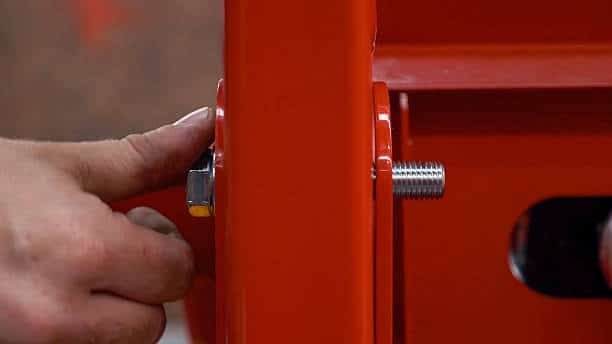Meta Description: Learn the important differences between Riveting and welding in joining sheet metal parts , when we use them, what are their benefits, and cost. Find out how to determine the right joining technique that fits your industry undertaking in this long guide.
In production and construction involving joining metal parts, there are two main approaches which prevail in the industry namely riveting and welding. Infrastructure has become what it is today because of these tested methods of time that build everything on the ground to the loftiest skyscrapers and the largest commercial ships carrying cargo across the high seas. Being aware of the key differences between the two approaches, one will be able to support engineers, manufacturers, and everyone taking part in metalworking projects.
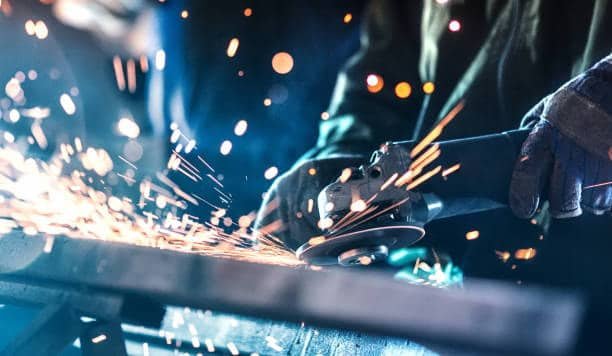
Riveting and welding have a common purpose of making firm, unbreakable connections between metallic parts, such as in a butt joint but they do it in completely different ways. Welding is a process of building a metallurgical bond between the materials by melting and fuse them whilst riveting involves the use of mechanical fasteners to join materials together without changing the basic structure. The basic difference results in different convenience, drawbacks and use of each of these methods.
What is Riveting and How Does it Work?
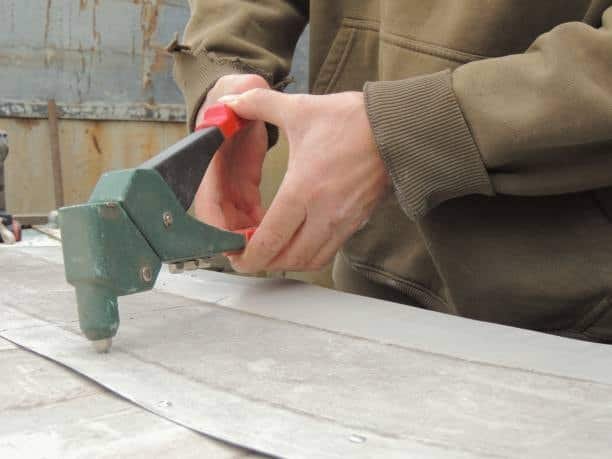
Riveting is a mechanical assembly technique by which several items of material are joined together with the usage of a rivet; a short cylindrical shaft re three sides, and with a head on the one outside. The hole is drilled through the materials to be joined, the rivet is inserted and then the plain end is deformed to form a second head, basically clamping the materials together. It results in a permanent connection which depends on the mechanical strength of the rivet, and the force that it exerts by clamping the joint.
The riveting procedure is ancient being in operation since times immemorial, there is some evidence that riveted joints are dated to dates back to the ancient civilization. The industrial revolution brought rebirth to the field of construction where riveting became the taskmaster of construction and this could lead to the large constructions of Eiffel tower and early skyscrapers. Holing, selection of solid rivets, and expertise technicians are necessary that involves accurate hole preparation to make the connection and rivet selection method satisfactory with maximum strength and reliability of the joint.
Understanding Welding Fundamentals and Processes
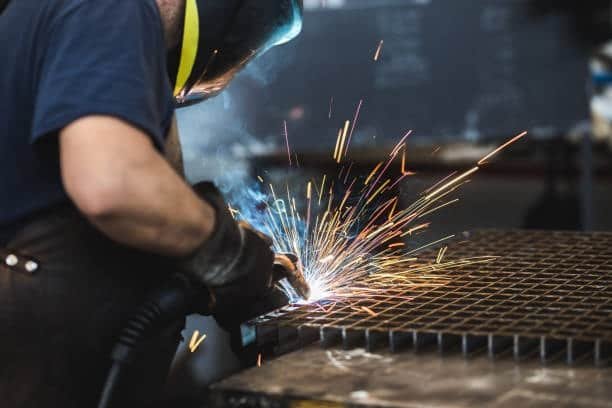
Welding is a form of fabrication that reconnects materials that have been melted together and fused to one another under pressure completing the bonding process and typically needing filler material. The process forms a metallurgical bond, which when effectively applied, can be stronger than the base material themselves. Welding involves use of heat or pressure or a combination of these as well as methods like flux cored arc welding for shielding the molten metal against atmospheric contamination.
Contemporary welding is diverse and processes include: welding using the arc, gas, tungsten inert gas resistance and special types of welding that are, laser welding. All the technologies have their specific benefits regarding application, material, and production needs. Welding has become an irreplaceable process in almost all industrial entities starting with automobiles and proceeding all the way to aerospace.
Historical Development of Both Joining Methods sheet metal
The history Riveting goes back thousands of years, but similar techniques can be observed in ancient Egyptian and Roman metalworking. The riveting technique became the pinnacle of construction, especially the work of bridges, buildings, and ships in the 19 th and early 20 th centuries. The method is proven to be reliable and sturdy by iconic riveted joints of the structures such as Golden Gate Bridge.
Although the art of welding can be traced to ancient times with forge welding being practiced by blacksmiths, welding really became a modern process in the late 19 th century. With electric arc welding coming into use in the 1880s manufacturers had faster rates of production and more design freedom. The World War II catalyzed the development of welding because the rapid construction of ships caused the innovation in welding technique and equipment.
Types of Rivets and Their Applications sheet metal fabrication
There are different designs of rivets, which are ultimately designed to perform a specific purpose and of loading. The most traditional rivet is a solid one, which has the highest strength and is usually applied in structures. Semi-tubular rivets are easier to install and have reasonable strength properties and therefore are throughly used in manufacturing where speed of production is an important factor.
Pop rivets (sometimes called blind rivets) may also be installed on one side of a joint, and so are useful where both sides cannot be reached. Structural blind rivets include more strength to be used in demanding cases. Using self-piercing rivets eliminates pre-drilling in other assembly work as in the automotive industry and appliances.
Major Welding Techniques and Their Characteristics riveted joints
The arc welding processes are used in industries in large numbers and the flexible metal arc welding (SMAW) is used in field jobs and during repairs. Gas metal arc welding (GMAW) is highly productive and it can be well controlled in manufacturing environments. Due to the high standards of quality and precision, the gas tungsten arc welding (GTAW) is used in critical applications in need of high integrity of joints.
Spot welding and seam welding are examples of resistance welding techniques which are more successful in environments where there is great production. They are cost-effective where repetitive assembly is being done, since these processes produce stout joints in short periods without using filler material. Refined processes such as electron beam welding, laser welding offer this control in aerospace and electronic solutions.
Strength Comparison Between Riveted and Welded Joints gas metal arc welding
There is a huge difference regarding the strength characteristics of the joints between the riveted and the welded joints because of the underlying joining mechanisms of the joints. When well done welded joints may have as high or even higher strength than the base material. Welded joints have single-continuing properties, which makes them have equal distributional loads through the entire joint and this gives an exceedingly good strength/weight ratio.
Riveted joints use mechanical strength in the form of individual fastener, and the friction between clamped surfaces. Although this makes good joints, the discrete property of rivets leads to the transfer of loads by point contact instead of a continuous load transfer like a continuous steel attachment, especially in joining dissimilar materials . This has the effect of concentrating stresses at the ends of rivet holes and joint strength may be constrained by this factor in certain applications.
Cost Analysis: Material and Labor Considerations
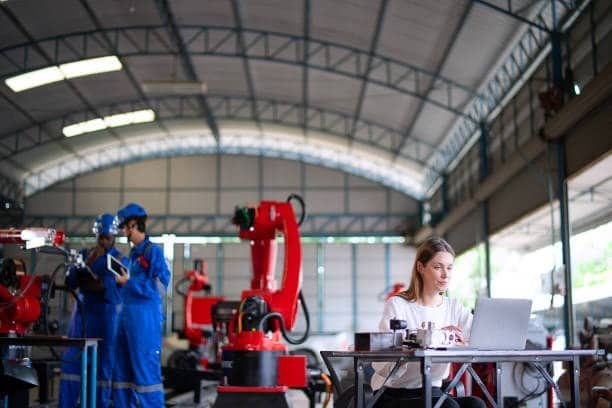
Economics of riveting verses welding have numerous other issues such as material cost of riveting or welding heat sensitive materials. Special rivets are needed in riveting and this makes the process expensive, especially where the rivets have to be high strength or corrosion free. But the plan oftentimes involves less skilled labour and less complex machinery that may cut down the labour expenses and training needs.
Welding usually requires fewer material costs; the materials used as fillers are often cheaper in comparison to rival materials in form of rivets. But welding is an advanced operation and needs very trained men and specialized plant, and consequently entails a greater expense in wages and more intensive training courses. The selection of methods usually rests on the volume of production where the process of welding is cost effective when the volumes to be produced are very high and riveting, then it becomes more cost-effective when the volumes to be produced are low.
Installation Speed and Efficiency Factors
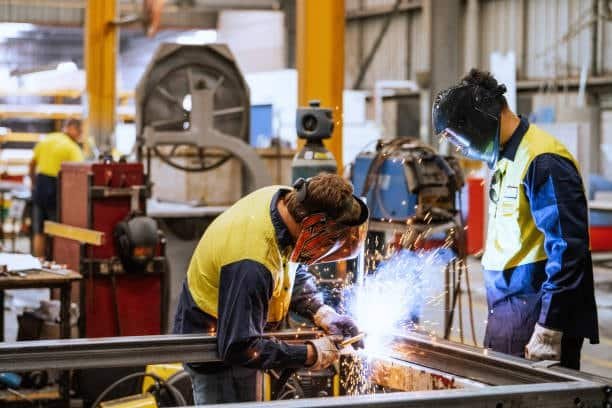
Depending on the application and the volume of production, riveting is not as efficient as welding at all. Riveting Newly developed riveting systems enable very high installation rates with pneumatic and hydraulic riveters being able to set hundreds of rivets per hour. Auto riveting machines on the aerospace manufacturing production line may have even higher speeds, and also retain a repetitive standard.
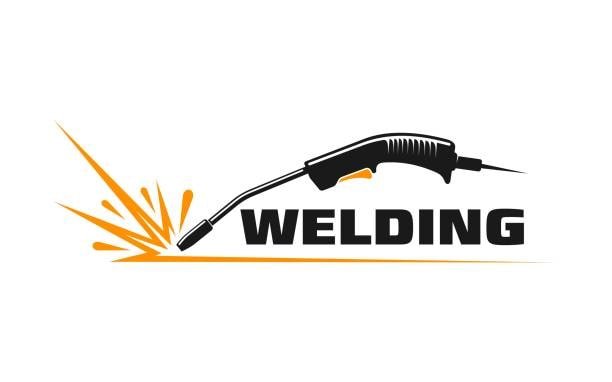
Speed of welding is very much dependent on the process applied and complexity of joint. Simple fillet welds may be fabricated rather quickly, whereas more complicated geometries of joints may require several passes and a lot of preparation time. Nonetheless, the need to have continuous welded joints could also reduce the number of separate operations as opposed to having multiple rivets installed on the same length of the joint.
Maintenance Requirements and Long-term Durability
Riveted joints are frequently preferred in long-term maintenance, because they are easy to overlook in routine inspection due to their visual accessibility. The single fasteners may be checked as loose, corrosive or damaged and troublesome ones may be substituted without removing closely related joints. This is what qualifies riveted structures to be attractive in structures which need frequent inspection and maintenance, particularly in applications involving joining soft materials .
Although stronger in most cases, welded connections are more difficult to examine and fix. To determine the integrity of the joint, it may be necessary to conduct non-destructives tests such as an ultrasonic or radiographic inspection. Welded joints frequently must be partially or completely removed and re-welded when repaired, an often disruptive and costly process that is more costly than replacing a single rivet.
Quality Control and Inspection Methods
Quality control strategies in riveting and welding are very different because of a different failure mode and inspection needs. Riveted joints could be examined visually as well as by simple mechanical checks e.g. tap testing to detect loose rivets. Higher level test methods such as ultrasonic testing are capable of identifying internal flaws in important applications.
There are more specialized ways and equipment necessary in welding quality control. Visual examination is still to be considered a significant part of inspection but it is complemented by such procedures as dye penetrant method, magnetic particle and radiographic inspection. The welding inspection process is usually complex, and it may need certifiable inspectors, and it may greatly affect project schedules and expenditure.
Material Compatibility and Limitations
The considerations on the compatibility of materials are varied between the riveting on one hand and welding on the other hand. The riveting process has the property of joining together dissimilar materials, because of the fact that the mechanical connection does not necessitate any metallurgical interaction. This is why riveting is good when it comes to the joining of aluminum to steel, composite materials to metals or other mixtures of incompatible materials that can hardly or never be welded.
Special attention should be paid to the compatibility of materials being welded because the welding process may produce brittle intermetallic compounds due to welding of dissimilar metals. Nevertheless, welding provides a wider scope regarding the design of the joint and has the capability to design joints that can hold material of any thickness unlike riveting that requires the material to be thick enough to hold the riveting material.
Applications in Aerospace and Aviation Industry
Riveting as well as welding are widely adopted by the aerospace industry and these two methods have distinct applications depending on their performance requirements and situations. In aircraft fuselage construction riveting is still widely used since the possibility to check and replace fasteners one by one is safety and maintenance essential. The fact that riveted joints have a damage tolerance property makes them very suitable in the instances where control of crack propagation is involved.
The applications of welding in aerospace components is in their weight savings as well as less demanding joint environment. Welding is frequently applied to create structural components such as engine components, fuel tanks, and structural components to give the best strength per unit of weight ratios. The more advanced welding processes such as electron beam welding and laser welding allow the welding of the exotic materials which are applied in high performance systems within the aerospace industry.
Automotive Industry Applications and Preferences
The contemporary automotive assembly industry depends greatly on welding in construction of body-in-whites, where significant amounts of speedy automated processes are able to reach rates needed in mass production. Inverting spot welding is prominent in the automotive assembly line and offers good joints within a shorter time at a cheap cost. Welding is suitable to automotive body panels and components that require thin sheet metals welded quickly and efficiently.
In automotive use Riveting concentrates on restricted access applications where the properties of the materials or access restrictions make mechanical joining favored. Self piercing rivets have become popular in the automotive industry in combination of aluminum and high-strength steel. The joining of dissimilar materials has got major interest with the trend of the automotive industry to use lightweight materials.
Construction and Infrastructure Project Considerations
Welding tends to be used over other forms due to speed and strength properties in large-scale construction in both steel frame and other buildings. Welding is a perfect choice of modern architecture due to the possibility of rapid formation of continuing connections under any geometrical figures. On-site assembly of large structural components can be done using field welding capabilities.
Riveting has remained relevant in the construction where inspection and maintenance accessibility are important. Riveted connections are commonly applied in bridges built in a high-stress or environmental susceptible area, where precise drilled holes are essential for strength . Riveted joints have a long-term provened life to make them economical to use in infrastructure projects that warrant a long service life.
Marine and Shipbuilding Industry Standards
The reasons behind this utter change into ship building, which has evolved over the last one hundred years, lie in that efficiency of production and requirements concerning structural performance led to the replacement of riveting by welding. Large ships are today almost exclusively built using welding to construct the hull, where such key properties as water-tight integrity and see through strength are critical. High-tech welding procedures allow constructing large and complicated structures of the hulls quite fast.
Nevertheless, riveting occasionally undergoes some applications in marine conditions where serviceability and resistance to corrosion is such a consideration. Riveted connections are used in some special vessels and offshore structures where inspection and possible replacement is to be made frequently. The severe nature of the marine industry operating environment requires breaking down the long-term performance attributes of the two joining methods into consideration.
Environmental Impact and Sustainability Factors
There are more environmental issues that build up the preference between riveting and welding processes. Welding generally results in less offcuts and materials since they can be recyclable. Welding processes can however produce greater air emissions and demanded greater energy intensive operation of the equipment especially those that involve the use of inert gas shielding.
The only emission during Riveting installation is little; however, drilling areas and riveting production might get more waste compared to riveting installation. Splitting of riveted joints at end-of-life eases the reuse of materials and components which align with circular economy. The manufacturing as well as end of life effects on the environment are important points to cover when it comes to life cycle assessments.
Safety Considerations for Workers and Operations
There is a huge variation in the requirement of safety in workplaces between a riveting and a welding job. Welding poses special risks such as strong light, poisonous fume and electric shocks. Safe welding operations must be undertaken through proper ventigation, personal protective equipment and training of the operator. Welding safety requirements can also be complex to the extent of requiring specific safety programs, as well as specific equipment.
Riveting processes have various safety issues attached to them, mostly with regard to noise exposure of pneumatic instruments, as well as eye damage caused by hurling particles. Although, in general, there are fewer acute safety hazards involved in riveting than with welding, the riveting operations need proper safety procedures and protective gear. The riveting method of offering safety may have its benefits in certain areas of operation.
Training and Skill Requirements for Technicians
The weld and rivet skill requirements are significantly different by means of complexity and length of training preparation. There is a great amount of training that one has to go through in order to learn welding in its different processes, learn about metallurgy, and train one to train ones hand-eye coordination to produce quality joints structural integrity. The trained welders usually need years of experience and continuous education to keep the certification and the skills.
The Riveting processes usually do not need much more training since the mechanical process is easier to understand and repeat regularly sheet metal fabrication. Nevertheless, the selection of rivets, preparation of pre drilled holes, and quality evaluation are still to be trained and experienced. The lesser skills needed in riveting could come as a benefit in cases where there are no skilled welders or training facilities both welding.
Modern Innovations in Both Technologies
New riveting technology Recent developments in riveting technology have been self-piercing rivets which do not require pre-drilling and blind rivets: newer materials provide greater strength properties corner joint welding
. Fully automated riveting systems types are the ones that utilize new sophisticated robotics and quality assurance cells to maintain repeatability in large-scale production settings. The developments have brought new industries and manufacturing processes into those of riveting.
Innovations in welding are still under progress with manifestations in robotic automation, process control and consumable supplies. Adaptive welding systems operate with feedback at the time it is happening resulting in automatic parameter change to optimize the quality and provided minimal ability of the operator tee joint welding. The applicability of the method is widely extended by offering the possibility to weld material combinations that could not be welded before due to the nature of the materials involved and the materials and filler metals which have been developed custom sheet metal parts.
Hybrid Approaches: Combining Riveting and Welding
Other applications canelfare of some applications in riveting and welding are joint as well as the efficiency to which the products are manufactured. Joints with weld bonding are welded but the adhesives are used to enhance the fatigue strength as well as to seal joint openings. In important applications such combinations may be used to render redundant load paths and combined with improved damage tolerance unlike welding.
A combination of such approaches need close engineering studies in terms of the compatibility of joining techniques and interaction to avoid unwanted effects materials sensitive. Hybrid joints can be complex and usually are applied in special scenarios where they are justified to warrant the extra complexity of design and manufacturing.
Future Trends and Emerging Technologies
The future of joining technologies remains to change according to the development of the materials science and manufacturing automation. Composite processes such as additive manufacturing are starting to allow integrating fastening functionality tig welding, and fastening may no longer need its own dissimilar procedure rivet diameter. Smarter fasteners with embedded sensors may be the means that will revolutionize maintenance and monitoring of riveted structures and welded structures.
Riveting and welding remain in a state of automation and robotization, and even the latest artificial intelligence is starting to optimize the process parameters in real-time aluminum alloys. Such innovations will enhance uniformity of quality as well as decrease the level of operator skill requirement. In the next few decades, it is highly possible that the concepts of Industry 4.0 will be incorporated in either of the joining methods.
Decision Making Framework for Project Selection
The choice to use riveting or welding has to be carefully considered by a systematic analysis of various factors like the level of demand, the requirement of strength, compatibility with the material and other long-term maintenance. With the help of a structured decision matrix, the comparative significance of various factors will be quantified and the selection will be conducted in the objective way visible rivet heads.
The critical factors of decision making are the joint strength demands, the level of production, the type of materials, the environmental requirements, the ease of maintenance and the skills of available workforce. There is also much concern that economic analysis not be performed on the initial costs alone but rather on the life-cycle expenses such as maintenance expenses, inspection expenses, and even possible replacement expenses. Constraints and regulations on projects need to be considered in decision framework also.
Economic Considerations and Return on Investment
Economic comparison between riveting and welding requires taking into consideration various factors affecting the cost other than material and labour costs used. The total cost of ownership is also affected by equipment cost, training requirements, quality control costs as well as long term costs of maintenance. The volume of production has a far greater bearing on the economic comparison, and welding works out to be more economical in high volume jobs and riveting more economical when small quantities are involved.
Productivity increase, quality enhancement and savings in rework cost should also be factored in as the return on investment calculations. Economic value in the project lifecycle can also be obtained through flexibility to alter processes to suit altering demands. Economic analysis can be careful, that is, it can often turn out that the cheapest immediate alternative does not offer the best service over the long run.
About GWT Worldwide
Shenzhen Guanwutong International Freight forwarding Co., Ltd. (GWT Worldwide) is a professional freight forwarding company that specializes the line of business in global freight forwarding, supply chain solutions, and cross border EMS. Having experience in air freight, sea freight services, China-Europe railway shipping, and full-service customs clearance, GWT Worldwide can guarantee effective delivery of the manufactured products and parts all over the globe by supporting the global supply chain allowing achieving modern manufacturing and construction projects.
Заключение
Welding and riveting are still going to make some appearances in contemporary manufacturing and building. The choice among the two approaches should be made attentively keeping in mind technical demands, economic considerations and operational limitations. Due to the development of technologies, the practices of hybrid technologies and new materials will only increase the scope of both joining techniques guaranteeing their sustainability of use into future manufacturing practice. The reason of its success is the suitability of the joining method to the concrete needs of the project and having in mind the long-term performance and economic aspects.

